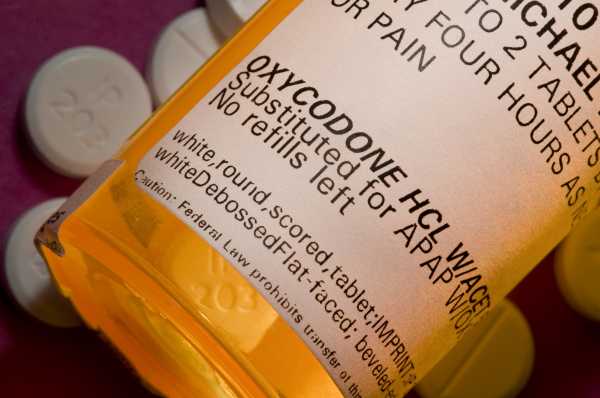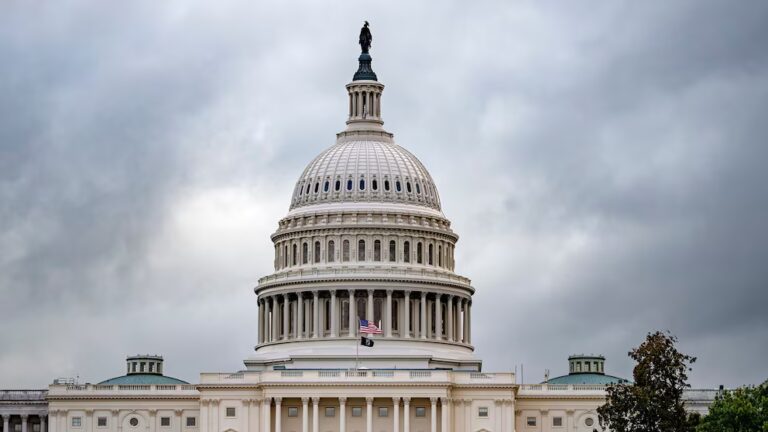
A new study provides more evidence that America’s ongoing opioid epidemic was fueled by doctors prescribing more painkillers than patients needed — leading to what’s now the deadliest drug overdose crisis in US history.
For the study, published in JAMA Internal Medicine, Harvard researchers looked at overdoses that resulted in an emergency room visit or hospitalization and whether the patient’s family members were previously prescribed opioids.
They found that individuals with family members who previously received opioid prescrip+tions were about three times as likely to report an overdose ending with a hospitalization or an ER visit, compared to those whose family members did not get opioids. And the more opioids a family member was prescribed, the higher the risk of such an overdose.
In short: When a family member received opioids, people were much more likely to overdose.
There are two dueling explanations for the opioid crisis. In one explanation, the overprescription of opioid painkillers made the drugs far more accessible to people, leading to a rapid rise in misuse, addiction, overdoses, and deaths. The other explanation emphasizes “root causes” like mental health problems, socioeconomic factors, or a general sense of despair, and suggests that prescription practices were less important, because people with these underlying issues were bound to use some type of drug no matter what.
Experts generally agree that both explanations played a role, but the question is which explanation played a bigger one. The new study strongly suggests that overprescription played a major role.
“The claim that opioid overdose is just about ‘root causes’ rather than drug supply cannot be sustained in light of these findings,” Keith Humphreys, a drug policy expert at Stanford who wasn’t involved in the study, tweeted.
Since 1999, the US has seen more than 700,000 drug overdose deaths, with most of those deaths linked to opioids.
The new study suggests that overprescription was a powerful factor in these deaths. The study, though, indicates that it was not just patients directly prescribed the drugs who fell victim, but even their family members, who could now borrow, buy, or steal the drugs from the person getting the prescription. Opioids’ proliferation led to more availability for everyone, and availability led to more exposure and a higher risk of addiction and overdose.
So without as many opioids around, a lot of overdoses may have been prevented.
The study looked at 2004 to 2015 health utilization data, taken from Optum Clinformatics Data Mart. More than 2,300 individuals who suffered an opioid overdose were identified and compared with more than 9,200 individuals who didn’t experience an overdose.
The study doesn’t definitively conclude that the presence of opioids prescribed to family members directly caused the overdoses, since it only found a correlation, not causation. There may be underlying factors that contributed to both the prescription of opioids and the overdoses. One possibility put forward by the authors: “For instance, individuals with family members who were prescribed opioids could be more likely to access and overdose on illicit drugs, such as heroin or other opioids, obtained outside of the family unit.”
Still, the study is very suggestive. And it’s backed by other evidence: A previous working paper by economist Christopher Ruhm found that the supply of opioids — more so than economic variables — was linked to more overdose deaths; that suggested the supply of opioids has played a big role, above and beyond “root causes” linked to economic factors.
This isn’t just a scholarly debate. To know how to stop the opioid epidemic, it’s important to know its causes. The latest study provides evidence that targeting prescriptions could help.
To stop drug crises, we need to know what causes them
The reason for this research is straightforward: If we want to end the opioid epidemic, and prevent future similar crises, we need to know what caused it and what contributed to it. If overprescription played a role, then targeting excess prescriptions, or even prescriptions in general, could help end and prevent the current and future drug overdose epidemics.
One catch is that the opioid epidemic has shifted over time. While prescription painkillers were at one point the dominant cause of overdoses, in recent years they’ve been replaced and exceeded by illicit drugs like heroin and especially fentanyl, a synthetic opioid.
This has raised the concern that simply cutting people off their prescriptions won’t be enough. In fact, it could even backfire: If people addicted to opioids are cut off from their painkillers, some of them could resort to heroin or fentanyl to satisfy their cravings. Since heroin and fentanyl are generally more dangerous, that could actually increase the number of overdoses — if enough people followed this route.
And there’s a risk that if opioid prescriptions are too heavily curtailed, then people who actually need the drugs for pain will go untreated in grueling conditions. (This is what I’ve called America’s painkiller paradox.)
So experts have argued for a careful reduction of opioid prescriptions — one that doesn’t impose hard limits on the medications, but encourages and trains doctors to prescribe the drugs only when they’re needed and at the doses that they’re needed. Alternatives to opioids for pain treatment also need to be made more available and paid for by insurance, so patients can access safer approaches that may even be better for their pain.
Even if opioid painkillers are pulled back, though, experts also argue that addiction treatment needs to be more readily available. The person who gets addicted to painkillers and is then cut off won’t go to heroin or fentanyl if the underlying addiction is treated. To this end, there are evidence-based approaches, particularly treatment with anti-addiction medications like methadone and buprenorphine, that have pretty good success rates.
But addiction treatment, particularly medication-based treatment, remains inaccessible in the US. Federal data suggests one in 10 people with any substance use disorder and one in five people with an opioid use disorder get specialty treatment. Even when an addiction treatment clinic is available, fewer than half of facilities offer any of the opioid addiction medications. In other words, treatment is inaccessible enough that most people who need it don’t get it, and even when treatment is available, it doesn’t meet the best standards of care.
Along with prescription reductions and more treatment, experts say that more harm reduction efforts — like increasing the number of needle exchanges and the availability of the opioid overdose antidote naloxone — and addressing those “root causes” of addiction, such as mental health issues and socioeconomic despair, could make a serious dent in the crisis.
Doing all of that, though, will require a large national investment in fighting the crisis — one that some Democratic presidential candidates have proposed, but President Donald Trump and Republicans have so far resisted. So the current drug overdose crisis continues, killing tens of thousands of people each year.
Sourse: vox.com






